In the world of American automobiles, there are years where it seemed the planets were aligned and all the cars were remarkable in some way—enthusiasts may argue, but 1940, 1955, and 1965 seem to resonate. There’s another year that arguably is as significant as the others, though maybe not exactly for the same reasons: 1961.
You can imagine with a new decade would come new values that had evolved from the previous one. As automakers are required to design cars with plenty of lead time, it would seem that their respective imaginations were being put to the test to anticipate the future expectations of culture. Who would anticipate the future? Who may not?
A new decade with new values, but how would the automakers imagine that when they have several years of lead time with which to contend? Some hit the market, while some may miss.
You can imagine the daunting task allotted to designers to create something appropriate in a future decade where evolutionary changes take place that reflect new-found values of the decade. No one can predict the future, but which brand (or corporation) did the best job of having the first proper car of the 1960s?
It could be said that the beginning of 1961 was different than the end. 1961 was still so close to the 1950s that culturally aftershocks of the previous decade could still be felt. As such, there still were cars with fins, but they also were being eschewed by a few brands as well.
A transitional year
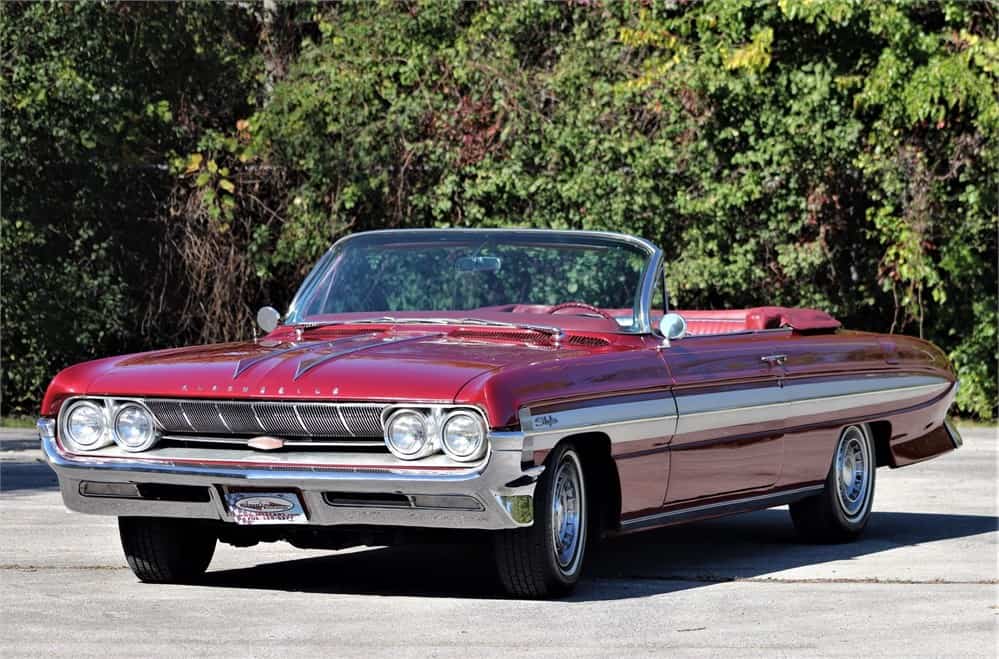
Nineteen sixty-one was a transitional year in other regards as well, most notably due to the influence of sports cars from the 1950s. Configured with bucket seats and a floor shifter, sports car sportiness began to influence American vehicles as evidenced by the Corvair Monza, Ford Falcon Futura Chevrolet Super Sport and Oldsmobile Starfire convertible. In particular, the Monza (which actually was introduced April 1960) was the progenitor of a certain essence that would appear in plenty of cars throughout the decade. “Luxury with sports car spirit” read the brochure as it touted “leather-soft vinyl covers the Monza’s front bucket seats” with rear bucket-styled folding seats. “With sports car pleasure, luxury features for the young-in-heart family.” Within a year, several more models in the industry would feature similar equipment, and even more beyond.
The Super Sport was an actual performance package that required the 348 with 305 horsepower, 4-speed (though Powerglide was available with the base engine), tachometer, padded instrument panel with passenger assist bar, special wheelcovers with simulated knock-off hubs, 8×14 whitewalls, power steering, power brakes, sintered metallic brake linings, HD suspension, and special SS badges. Interestingly, the package was available on most Impala body styles, including four-doors. The Super Sport would continue into the rest of the decade as Chevrolet’s de facto buckets-and-console full-size sporty car, which would be joined by the Ford Galaxie 500/XL, Plymouth Sport Fury, and others.
The Starfire, in contrast, was a convertible that was more in line with the personal-luxury Thunderbird. “A new limited-edition, high performance sports convertible!” read the brochure. The Starfire was the first of the full-size personal-luxury cars that would be joined by the Pontiac Grand Prix, Dodge Monaco, and even the Oldsmobile Toronado in 1966.
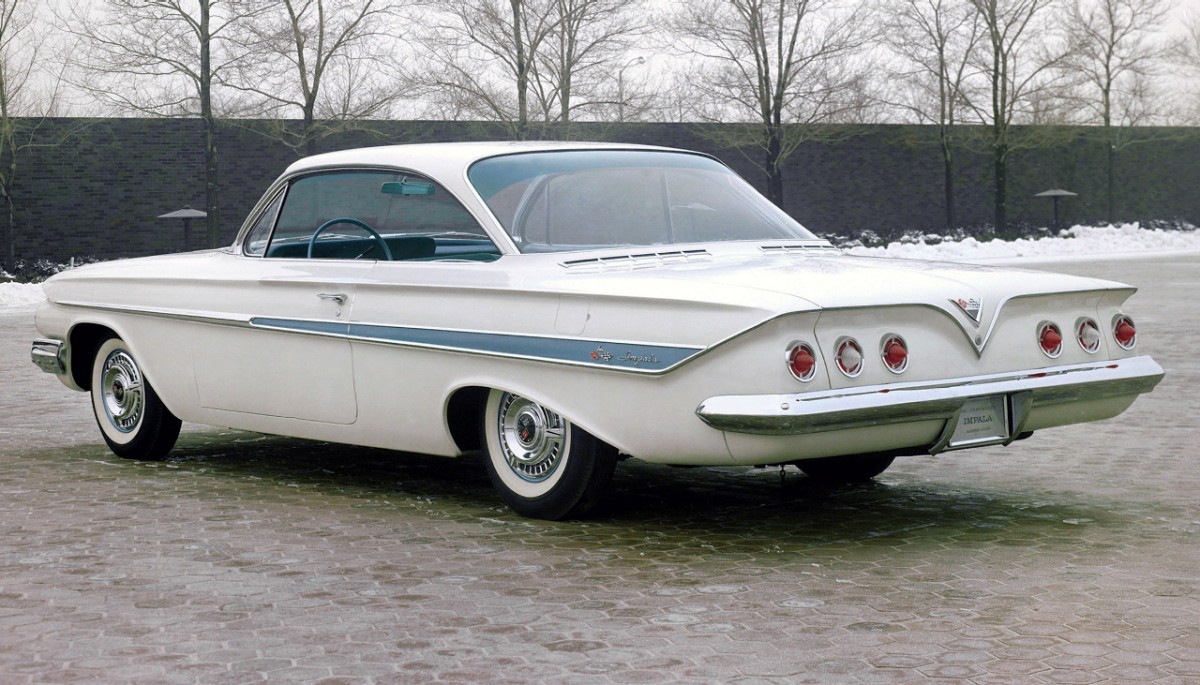
General Motors
It wasn’t too long ago that GM was trying to one-up Chrysler’s Forward Look after being caught with its pants down. GM’s response from 1959 cars was the epitome of style at that moment, but the foreign car onslaught, combined with a minor backlash against the excesses of the automotive scene, meant it would not sustain itself.. As a result, 1961 products from General Motors were remarkably clean compared to their 1959 brethren, and they look trimmer as well. Several choices of rooflines, dependent on models and platforms (B- or C-body), featured plenty of glass for a light, airy feeling.
Looking at the full-size offerings, the 1961 Chevrolet eschewed the “bat-wing” fins from the previous two years and almost looked like it had no extraneous fat, especially in two-door hardtop form. “Trim new size” and “clean new style” may appear to be marketing mumbo-jumbo, but it was all true. The 1961 Chevrolet was the everyman’s car that ushered in the 1960s with a red carpet.
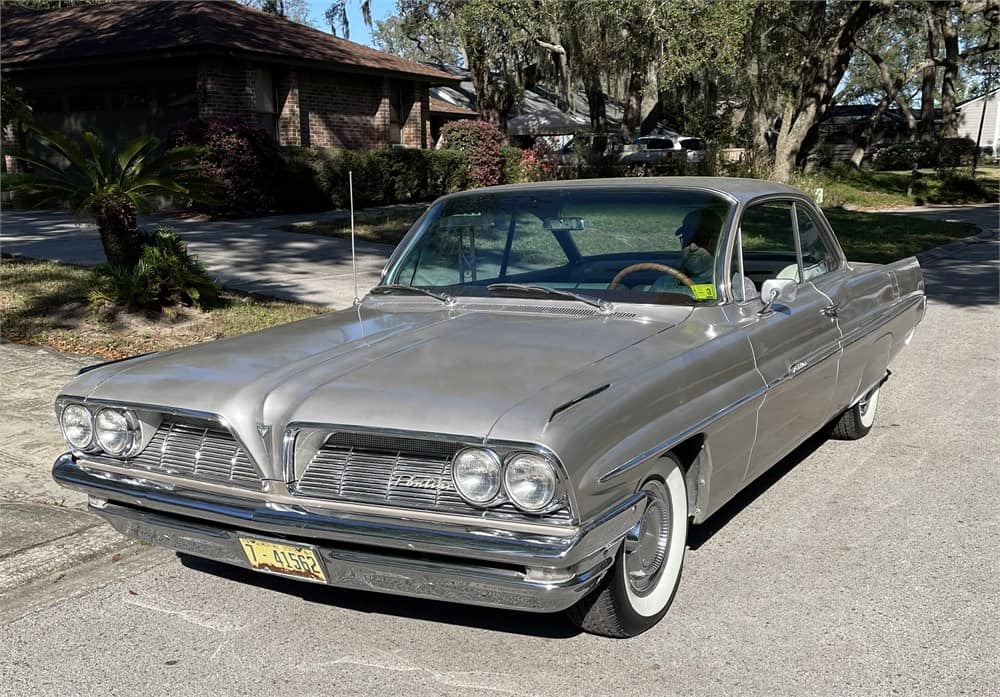
It was a very similar story at Pontiac. From an image perspective, the 1961 series was a continuation of the strategy that had begun in 1955 and was solidified in 1959. The Wide-Track brand also developing its racing acumen like no other thanks to the Super Duty parts program that saw limited release in 1960 and picked up speed for 1961. Styling was clean like Chevrolet’s but had more to show thanks to stylish 8-lug wheels and colorful interiors with the Ventura and Bonneville.

“America’s finest performance handling and roadability”
Oldsmobile won several NASCAR races in 1959 but, by 1961, it almost seemed the Rocket Division’s foray into performance was a 10-year deal that was no more. Oldsmobile still was that division when it came to image, however, with a rear end that gave the impression of a jet rocket taking off, complemented by “skegs” that were also shared with Cadillac. Oldsmobile held the distinction of having both B- and C-body platforms, so the 98’s body was shared with the Buick Electra and most Cadillacs. The rooflines for the 98 were a little different than its lesser B-body 88—almost more contemporary for the new decade, in some respects.

Buick was arguably the most flamboyant of the 1959 GM offerings (Cadillac fans may disagree) but by 1961 the brand mellowed out and came off as the most drastic redesign. The mid-line Invicta in particular had the Custom option which offered a racy two-way power seat on two-door hardtops.
“The clean look of action”
To the casual observer, Cadillac was the same as it was in 1959, albeit with fins that continue to be shorn year by year. Though the most flamboyant of the GM designs, Cadillac was just as trim like its stablemates, with the influence from the Cadillac Cyclone Motorama show car and the Firebird III experimental show cars, especially with the “skegs” (the lower-body fins), which were previewed on the 1960 Eldorado Brougham. While the fins may have given the impression of not being able to let go of the 1950s, the rooflines were contemporary and lent an air of modernity. Maybe it wasn’t as clean as the also-new 1961 Lincoln Continental, but it was no less contemporary.

Chuck Jordan was appointed Cadillac’s chief stylist at the end of 1957. Per an interview with Collectible Automobile, Jordan said, “The 1959 model was almost finished when I took over as chief designer. The studio had a 14-member team: designers, modelers, and technical people. We got comfortable with each other as we face-lifted the 1960 Cadillac, so we were ready when it came time to start on the 1961.” According to Jordan, the departing Harley Earl tried to make the subdued 1959-60 Eldorado Brougham a predictor to what the 1961 Cadillac would be like.
“We felt the 1961 Cadillac ought to be a style leader,” comments Jordan, “which meant not as heavy-looking as in 1959-1960. It needed to keep the Cadillac elegance, but with more life and more of what I call grace and spirit.” Dave Holls, Jordan’s assistant who gave us the Brougham’s styling, adds, “We wanted to get off the big fins. Chuck came up with the idea of the skegs, those long, pointy fins along the bottom of the fenders, and those first appeared on the 1960 Brougham.”

Chrysler Corporation
For all that was good about General Motors for 1961, the contrast at Highland Park was profound. The engineering was first-rate, but the styling was middling at best. Let’s start woth what was most palatable.
The carry-over Valiant, now marketed as a Plymouth and not as its own brand, was joined by the Dodge Lancer. Both were the most stylish of the compacts from the Big Three, but they also bore the stamp of some Exner bizarreness from the 1950s versus the modernity of the Corvair of the homely purpose of the Falcon. These cars deserve a pass.
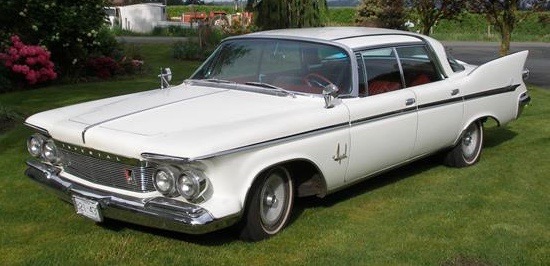
The Imperial was the only Chrysler marque that had not been updated to Unibody, featured new neoclassical styling with free-standing headlights inspired by those from the 1930s. Out back you’d find the tallest fins ever on an Imperial—suddenly, it was 1959! Out of touch, maybe, but not out of its mind.
Over at Chrysler, the magnificent 1960 models were carried over with a facelift that flipped the trapezoid that was now surrounded by canted quad headlights. This was a bizarre turn from what was offered the year before. Compared to competitors like Oldsmobile and Buick, Chrysler came off as being out of touch and somewhat bizarre, but not quite ugly.

1961 DeSoto coupe 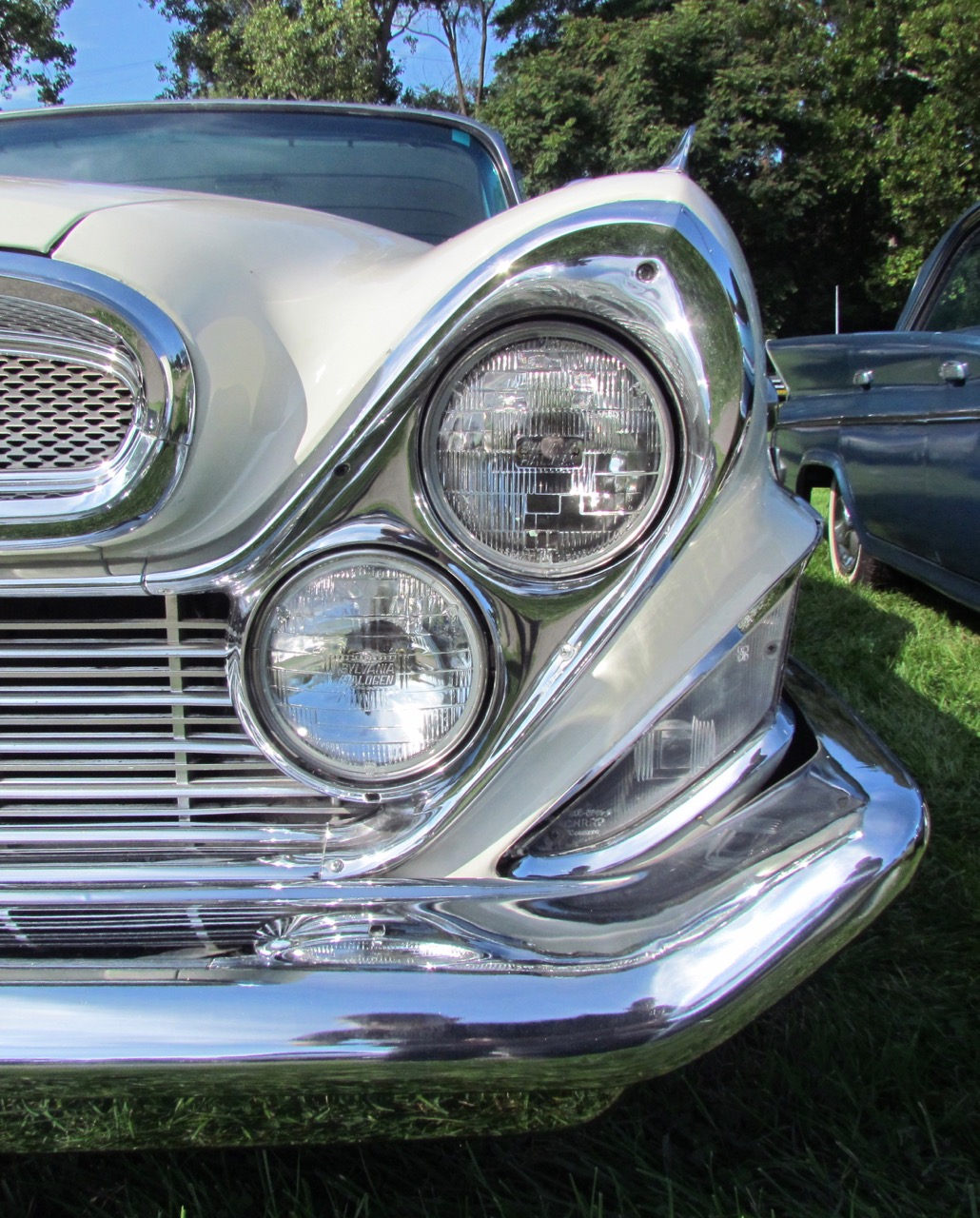
The similar DeSoto, on the other hand, featured a two-tiered grille that didn’t appear to be related to each other. The brand had been slowly dying thanks to a combination of being part of a cannibalistic dealer network and market forces that came to a head during the 1958 recession. Only two years before, DeSoto had four models in its portfolio, while in 1961 they were simply known as “DeSoto.” Is it any wonder that Chrysler killed the brand before the end of the 1960 calendar year. So, yeah, bizarre and ugly, but far from the worst at the corporation.
Plymouth and Dodge, on the other hand, make you wonder what was going on at headquarters at the time. Compare the two with Chevrolet and Pontiac and it’s night and day the difference. Plenty has been written about how the 1962 Plymouth and Dodge suffered from a miscalculation and were downsized to the point of unpopularity, but the true vitriol should be saved for the 1961s.
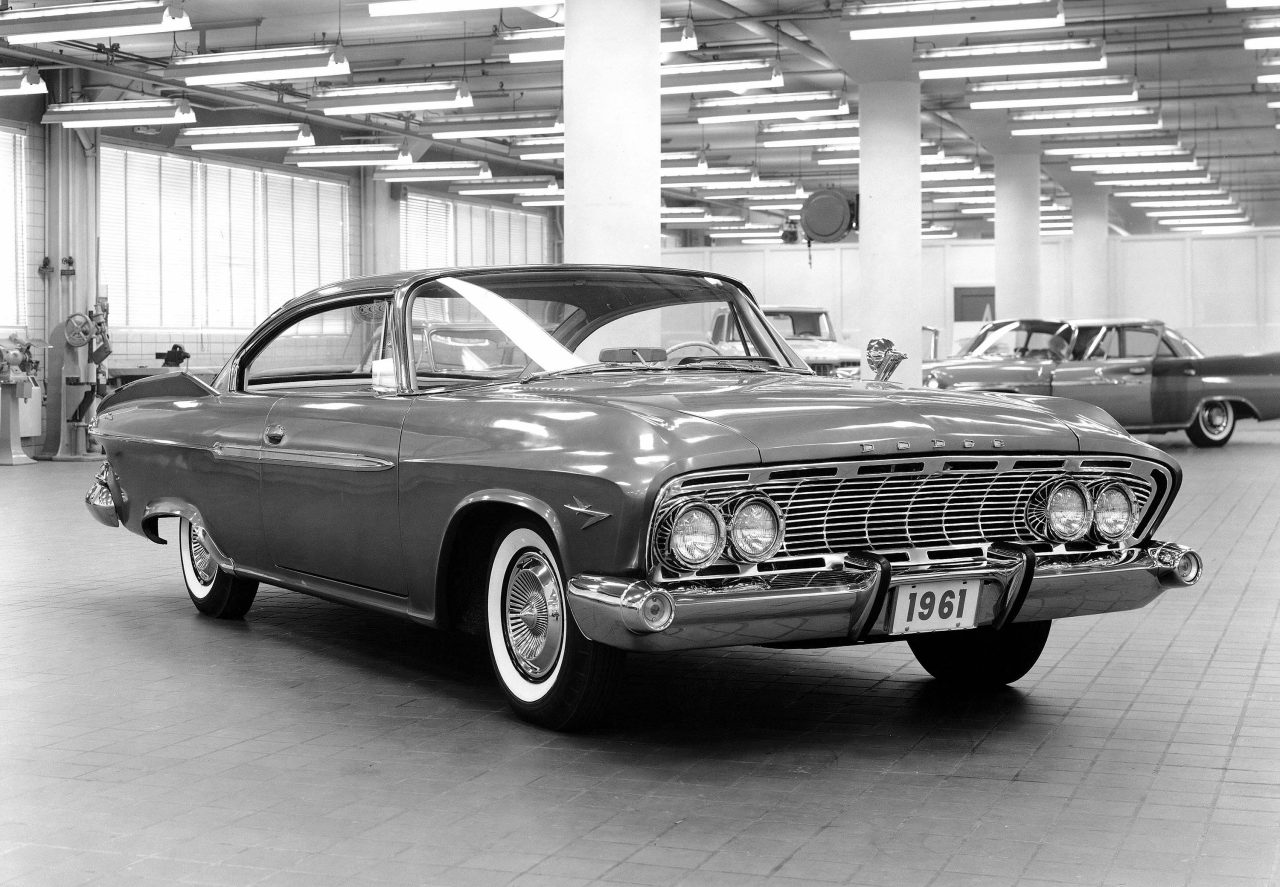
The Plymouth has aged a bit better compared to the Dodge, if not for anything other than the kitsch factor. Looking like a determined missile with an angry face, the Plymouth featured a pinched rear end with rocket-like taillights tacked onto the sides. Engineering was solid, with the soon-to-be-famous Slant Six and the nifty 330-horspower SonoRamic Commando 383 with ram induction leading the charge against heavy artillery from Ford’s 401-horse 390. It’s possible Plymouth was superior to cross-town rivals, all things being equal, but not looking like that.

To contemporary eyes, the Dodge has aged worse, though I can’t say which one was uglier at the time. Like in 1960, there were two full-size Dodge series: Dart and the senior Polara. Biggest difference was the wheelbase, with each car featuring different rear fenders (though not obvious to the casual eye), taillights, and grilles. For the Dart, they were curiously subtle and small lenses that defied logic so much that Dodge offered a goofy accessory lens for better visibility for others on the road. The Polara’s taillight was much different—more of an outgrowth on the side of the rear fenders. I’ve read one opinion that it looks like an ingrown toenail, though to Dodge’s credit it was integrated into the fender, unlike Plymouth’s. Fins were perched atop both models’ rear fenders, but they somewhat were in reverse and not quite the throwback that they could have been. The overall look was somewhat sad in the face.
April 1961 Motor Life magazine
“The 1961 Dart marks the beginning of something new in fin treatments, with the fins tapering rearward, ending in a sharp reverse curve—creating a reverse fin effect on the rear quarter panels. Front-end styling can be described as a study in concave surfaces enclosing a nicely designed grille. The dual headlights have been lowered and recessed into the grille, with the marking lights carried in nacelles built into the bumper. The only jarring notes in the new design come when the car is viewed from directly behind, where the sculptured fins thicken and lose their interest, and over the front wheels, where the hard headlight crease dissolves into humps, making the arc look higher and wider than it actually is.”
It should be noted that Virgil Exner, Vice President of Styling, suffered a heart attack in 1956, during the design of the 1961 models. Could this have made a difference?

Honorable Mention: Rambler
Ramblers generally were inoffensive in looks, though American Motors eventually embraced the fins trend somewhat. Starting with the 1958 recession, Rambler became a true contender in the American automotive market, becoming number three in sales in 1961, pushing Plymouth down a notch from that spot. That also was the year that Rambler introduced a facelifted Ambassador, the senior model that competed against upmarket V-8 versions of the “Low-Priced Three.” Looking at the Ambassador, you would think it was designed by Virgil Exner because it looked as goofy as the ’61 Dodge. Marketing material touted the “gracefully sloping hood, distinctive fender profile and integrated aluminum grille enhancing Ambassador’s distinct beauty and luxury. The new Ambassador’s styling treatment represents the latest, most modern trend in car design.”






Well written and postulated. Ive always considered 1961 as the apex “transition design” year between the Chrome/Paint/Flamboyance beginning in the mid Fifties and the smoothness that permeated the rest of the 1960s. Every manufacturer was firing on all cylinders and it would have been a fun year to attend an Auto Show and haunt dealerships. Now let’s put your research and writing skills to 1955 automobiles, another great paradigm shift.
My Dad worked for GM his entire working life (Delco-Remy plant in Anderson Indiana), and I remember his black/white top ’61 Impala SS. I was in my 40s and Dad gone when I discovered just how rare that long gone car was. Curses. It was a looker and a runner, wish I had it now.